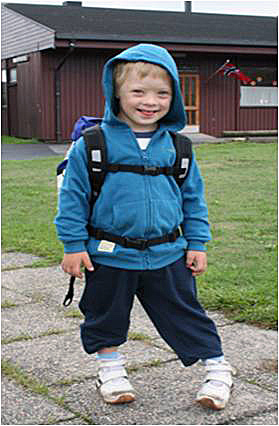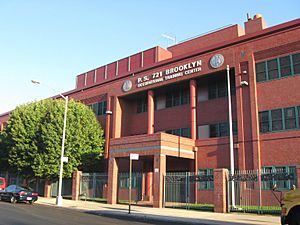Special education facts for kids

Some kids learn in different ways or need extra help. This might be because they have a disability or learning difficulty. Special education is a way of teaching these students. It helps them learn and grow.
Some students with special needs can learn in regular classrooms with their friends. Other students might go to special schools. These schools are designed to help them learn best. Sometimes, students with big challenges might need a lot of support to get an education.
Students who have strong feelings or act out can also get help. Inclusive education is a way to make sure all students feel welcome. It tries to stop anyone from being left out of school. This idea is supported by the Convention on the Rights of Persons with Disabilities.
Special needs can include many things. For example, some students might have trouble with speech or hearing. Others might have strong emotions or behavioral challenges. Some have physical disabilities or developmental differences. Students with these needs often get extra help in school. This help can be different ways of teaching. It might also mean using a special resource room or helpful technology.
Some students are very smart and learn quickly. These students are called gifted. They also need special ways of learning to do their best. They often do well with different teaching styles or special school programs. The term 'special education' is usually for students whose needs make it hard for them to learn in typical ways. Teaching gifted students is usually called Gifted education and is handled separately.
Contents
How Students Get Special Education Help

Schools offer different ways to help students who need special education. Here are some common ways:
Learning in a Regular Classroom
- Regular Classroom
This is when students with special needs spend their whole school day in a regular classroom. They learn alongside students who do not have special needs. Sometimes, a helper called a teacher's aide works with them. This helps students with special needs learn and participate. This setup is often for students who can learn well in a regular class but might need a few small changes.
- Regular Classroom with Assistance
These students are also in a regular classroom. But they get a bit more help from a teacher. This teacher is specially trained to work with students who have special needs.
- Collaboration
Sometimes, the regular classroom teacher and a special education teacher work together. They plan lessons and activities. This way, they can make sure all students get the help they need.
Learning in Special Settings
- Resource Room
Some students need lessons that are changed or taught in a special way. They spend most of their day in regular classes. But for some time, they go to a special room called a resource room. Here, they get focused help.
- Separate Classroom or Self-Contained Classroom
These students need a classroom just for them. This classroom is designed to meet their specific learning needs. They spend their whole day in this special class.
- Separate School or Special School
Some students go to a different school. This school is only for students with special needs. These schools offer very specific programs.
- Residential School or Boarding School
These students might live at a school to get special help. This type of school provides education and living support.
- Home or Hospital
Sometimes, students cannot go to a regular school building. This might be due to health reasons. In these cases, they can get special education services at home or in a hospital.
Most schools around the world try to include all students. This idea is called inclusion. It means children with special needs are in regular classrooms as much as possible. Sometimes, schools use full inclusion for certain students. This means they are always in regular classes. This helps everyone learn to be more accepting.
Another approach is mainstreaming. This is when students with special needs spend as much time as they can in regular classrooms. For the rest of the day, they go to special classes. Social integration is similar. It helps students in resource rooms or special classes still be part of the school community.
Images for kids
See also
 In Spanish: Educación especial para niños
In Spanish: Educación especial para niños


